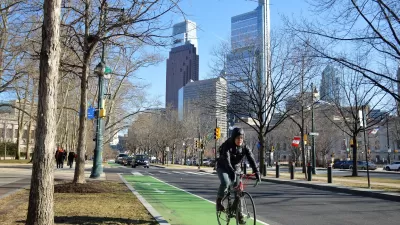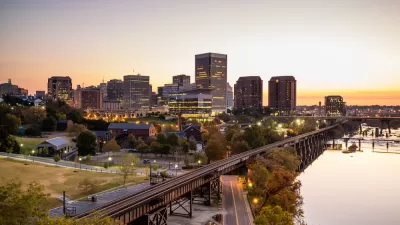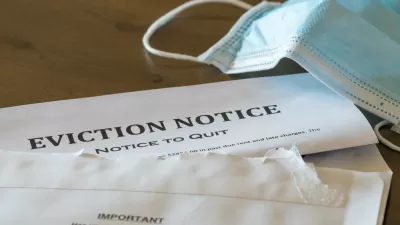The example of Philadelphia shows how a land value tax could provide relief to residents and the city's finances.

Josie Faass writes an argument in favor of a land value tax—an argument bolstered, according to the article, by how the city's real estate tax has fared during the pandemic.
"Based on the assessed value of an owner’s buildings and land, real estate taxes have remained in the black since the pandemic began, increasing more than 5% over last July’s total," writes Faass.
Faass makes the case that a simple change could leverage the stability of property taxes to ease the burden of the pandemic's economic downturn.
Because through a simple mathematical rejiggering of the tax code, Philadelphia could alleviate tax burdens on its most at-risk populations without reducing the overall revenue stream one dime — effectively creating a free stimulus for homeowners and businesses struggling to make ends meet. Philadelphia can create an environment of shared and increased prosperity.
The difference between a property tax and a land value tax is where the nuts and bolts of the "rejiggering" suggested here is found. In Philadelphia, the value of buildings makes up the vast majority of property tax bills, at 76 percent, versus just 24 percent for the value of the land, according to Faass.
If Philadelphia shifted to just a 50-50 ratio of tax on buildings to tax on land, homeowners would see a savings of over $60M each year, and with land value tax or LVT, that total jumps to about $123M — that’s over 10% less than residential property owners pay now, and in a city where the median household income is less than $48,000 a year, this will have real impact.
The difference would be made up for by land speculators, or "exactly who you'd hope," according to Faass.
FULL STORY: How a land value tax could make Philadelphia a more equitable city

Study: Maui’s Plan to Convert Vacation Rentals to Long-Term Housing Could Cause Nearly $1 Billion Economic Loss
The plan would reduce visitor accommodation by 25,% resulting in 1,900 jobs lost.

North Texas Transit Leaders Tout Benefits of TOD for Growing Region
At a summit focused on transit-oriented development, policymakers discussed how North Texas’ expanded light rail system can serve as a tool for economic growth.

Using Old Oil and Gas Wells for Green Energy Storage
Penn State researchers have found that repurposing abandoned oil and gas wells for geothermal-assisted compressed-air energy storage can boost efficiency, reduce environmental risks, and support clean energy and job transitions.

Private Donations Propel Early Restoration of Palisades Playground
Los Angeles has secured over $1.3 million in private funding to restore the Pacific Palisades playground months ahead of schedule, creating a modern, accessible space that supports community healing after recent wildfires.

From Blight to Benefit: Early Results From California’s Equitable Cleanup Program
The Equitable Community Revitalization Grant (ECRG) program is reshaping brownfield redevelopment by prioritizing projects in low-income and environmental justice communities, emphasizing equity, transparency, and community benefits.

Planting Relief: Tackling Las Vegas Heat One Tree at a Time
Nevada Plants, a Las Vegas-based nonprofit, is combating the city’s extreme urban heat by giving away trees to residents in underserved neighborhoods, promoting shade, sustainability, and community health.
Urban Design for Planners 1: Software Tools
This six-course series explores essential urban design concepts using open source software and equips planners with the tools they need to participate fully in the urban design process.
Planning for Universal Design
Learn the tools for implementing Universal Design in planning regulations.
Ascent Environmental
Borough of Carlisle
Institute for Housing and Urban Development Studies (IHS)
City of Grandview
Harvard GSD Executive Education
Toledo-Lucas County Plan Commissions
Salt Lake City
NYU Wagner Graduate School of Public Service





























